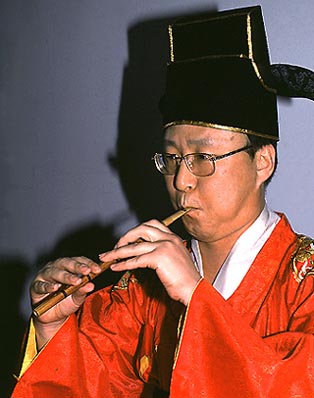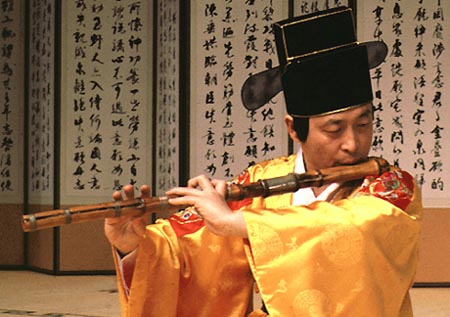Information on traditional Korean instruments taken from a section Performing arts in
Korean Insights
P'iri: Traditional double-reed aerophone

Like the Western oboe, the p'iri sound comes from a vibrating reed. During the
Koguryo Kingdom (37 B.C.-A.D. 668), there were several kinds of p'iri--sop'illyul,
taep'illyul and top'ip'illyul--but only two--the tangp'iri and hyangp'iri--have
been used since the Koryo Dynasty. The p'iri carries the main melody in many
traditional musical genres.
Taegum: Large transverse bamboo aerophone

This large transverse flute dates to seventh-century Shilla. It was one of three
transverse flutes,which together with the komun'go, kayagum and hyangbip'a, made
up Shilla's 'Three Strings and Three Bamboo Flutes'(samhyon samchuk). The taegum
was the largest of the three,followed by the chunggum ('middle' flute) and the
sogum ('small' flute). The chunggum is no longer used but the taegum and sogum
are played in court and folk music.
According to A Guide to the Study of Music (Akhak kwebom) compiled by the Choson
scholar Song Hyon in 1493, this instrument was made of aged yellow bamboo. Today,
however, the best taegum are made of thick, strong bamboo.
The taegum is over two feet long and has one mouth hole, six finger holes and an
extra hole covered with a thin membrane, which produces the flute's distinctive
buzzing sound. The taegum has a broad range of over two octaves.
Chong-gan-bo: Traditional Korean Notation System
notation
ornamentation


